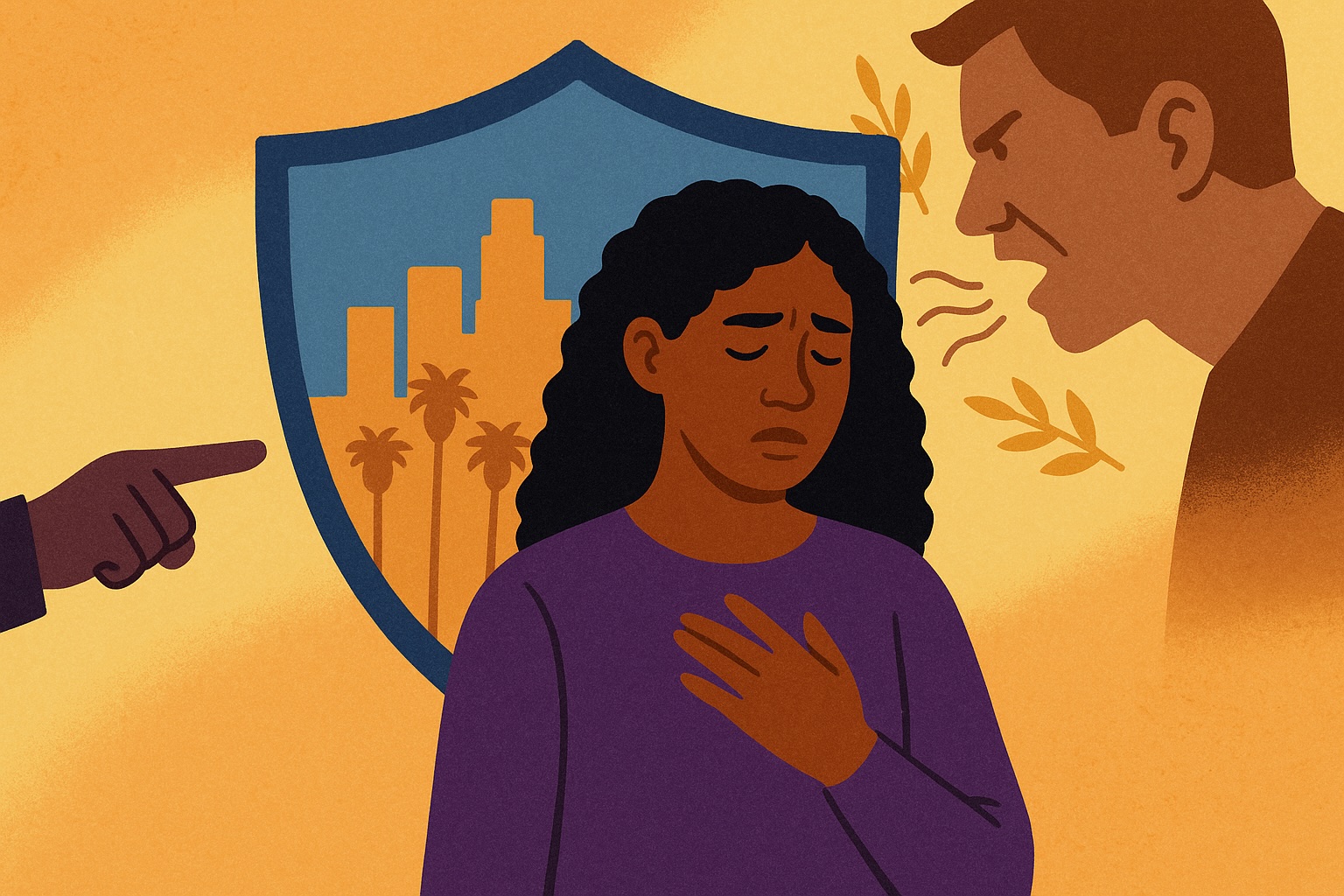SB 1141 Explained: How California’s Coercive-Control Law Shields Los Angeles Domestic-Violence Survivors in 2025
California's new SB 1141 law now recognizes coercive control as a form of domestic violence, providing Los Angeles survivors with a powerful legal tool to seek protection from non-physical abuse.

For years, the legal definition of domestic violence often focused on physical abuse, leaving many survivors of emotional, psychological, and financial abuse without a clear path to legal protection. In a landmark legislative move, California has changed that. With the implementation of SB 1141, the state now recognizes "coercive control" as a form of domestic violence, providing a new and powerful legal shield for survivors, particularly in a large, diverse metropolitan area like Los Angeles.
What is Coercive Control? 🛡️
Coercive control is a pattern of behavior that an abuser uses to dominate and control a victim. It goes far beyond a single act and includes a series of tactics designed to isolate, intimidate, and strip a person of their autonomy. Under SB 1141, this can include behaviors such as:
- Financial Control: Preventing a person from accessing money, getting a job, or controlling all household finances.
- Isolation: Cutting a person off from family, friends, and social support.
- Intimidation: Using threats, gestures, or other actions to instill fear.
- Monitoring and Surveillance: Tracking a person's location, phone, or online activity.
- Micromanagement: Dictating daily activities, clothing, or even what a person eats.
By including these behaviors in the legal definition of domestic violence, SB 1141 addresses the reality that abuse is often a systematic campaign of control, not just a physical act.
How SB 1141 Works in Los Angeles in 2025
For domestic violence survivors in Los Angeles, SB 1141 is a game-changer. It provides a new legal basis for obtaining a Domestic Violence Restraining Order (DVRO). Previously, a survivor who was not physically harmed might have struggled to prove their case. Now, they can present evidence of coercive control to a judge.
This means a survivor can document and use proof of non-physical abuse—such as text messages showing constant monitoring, bank statements revealing financial manipulation, or witness accounts of isolation—to seek a restraining order. This order can protect them from further contact, require the abuser to move out of a shared home, and set up temporary child custody and support arrangements.
The law also helps legal professionals and the courts better understand the complex dynamics of abuse. It empowers advocates in Los Angeles to build stronger cases and provides judges with the legal framework to issue protections based on patterns of non-physical abuse.
Finding Your Legal Shield: Next Steps for Los Angeles Survivors
If you are a survivor in Los Angeles, understanding this law is a crucial first step toward safety. Here's what you can do:
- Document Everything: Keep a record of all controlling behaviors, including dates, times, and a description of the events. Save text messages, emails, and any other relevant evidence.
- Contact a Domestic Violence Legal Resource: In Los Angeles, numerous organizations can help you navigate this new law. They can provide free legal aid and guidance on how to file for a DVRO based on coercive control.
- Prioritize Your Safety: If you are in immediate danger, please call 911 or a domestic violence hotline. The law is a tool for protection, but your physical safety comes first.
SB 1141 is a significant step forward for survivor justice. It acknowledges the full spectrum of abuse and provides survivors in Los Angeles with a powerful legal compass to guide them toward a safer future.
